Will Medicaid Pay for a Mobility Scooter?
As an Amazon Associate we earn from qualifying purchases.
Medicaid does cover the cost of mobility scooters or power wheelchairs under certain circumstances. The eligibility for coverage varies depending on the individual’s living situation, whether it be in a nursing home, assisted living facility, or at home. For those residing in Medicaid-funded nursing homes, the need for a mobility scooter is typically recognized and provided by the nursing home staff.
Medicaid coverage for mobility scooters or power wheelchairs may require prior authorization and meeting certain medical necessity criteria. It is recommended to consult with Medicaid or a healthcare professional to determine if coverage is available and what steps need to be taken for reimbursement.
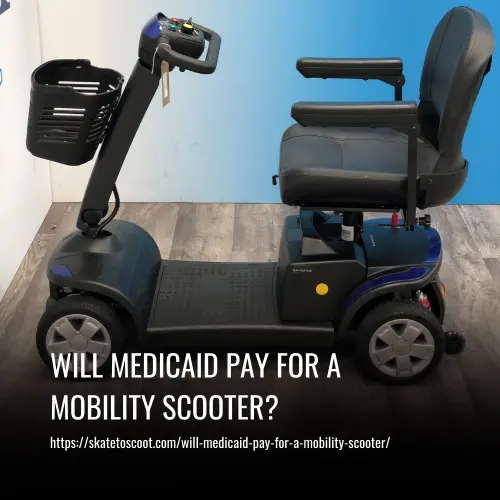
Eligibility for Mobility Scooter Medicaid Coverage
Getting coverage for a mobility scooter through Medicaid can vary from state to state due to differing eligibility requirements. Here we will explore the factors that determine eligibility for Medicaid coverage of a mobility scooter.
1. Income and Resource Limits
To be eligible for Medicaid coverage of a mobility scooter, individuals must meet income and resource limits determined by their state. In some cases, receiving supplemental security income automatically qualifies an individual for Medicaid.
2. Medical Need and Prescription
Medicaid will pay for a motorized scooter or wheelchair if there is a medical need for the specific type requested. A doctor’s prescription is typically required to confirm medical necessity.
3. State Variations
Coverage for mobility scooters as durable medical equipment (DME) under Medicaid varies across states. Some variations include coverage for vocational use, skilled nursing homes, accessories, and whether the scooter can be rented or purchased. Certain states may require special forms or physical therapy reports for qualification.
4. Residence and Medicaid Programs
Eligibility for Medicaid coverage of a mobility scooter may depend on where an individual lives. Those in Medicaid-funded nursing homes commonly receive scooters based on staff assessment. For individuals living at home or in assisted living, Medicaid waiver programs with similar eligibility policies as Medicaid may apply.
5. Activities of Daily Living
If an individual is unable to perform daily activities without the assistance of a mobility scooter, Medicaid is likely to cover the cost of the scooter.
6. Participating Equipment Suppliers
If approval for a mobility scooter purchase through Medicaid is obtained, it is necessary to work with a Medicaid participating medical equipment supplier.
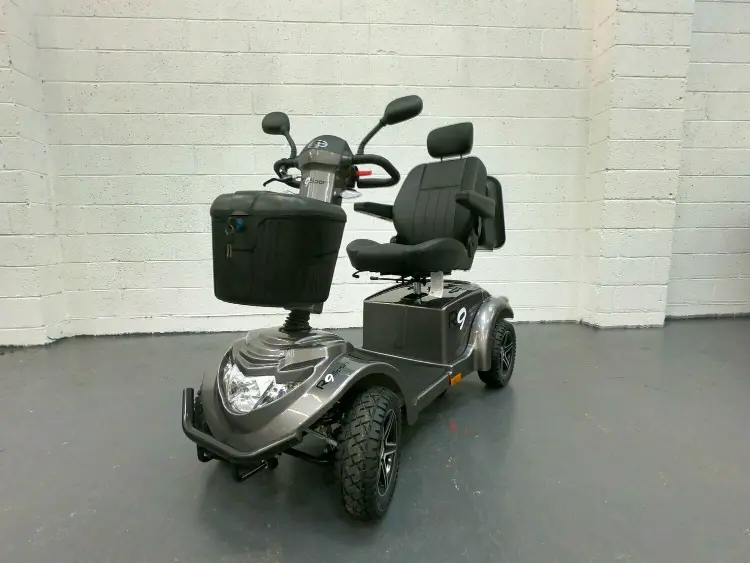
It is important to note that the information provided here is a general overview, and the specific guidelines for Medicaid coverage for mobility scooters may vary based on the state in which an individual resides. It is recommended to consult with local Medicaid offices or healthcare professionals for more detailed and accurate information.
Frequency of Medicaid Mobility Scooter Coverage
The frequency at which Medicaid will cover the cost of a mobility scooter can vary depending on individual circumstances and state regulations. Generally, Medicaid replaces mobility scooters every five years. However, if there are significant changes in the patient’s medical needs or if the scooter is damaged beyond repair, Medicaid may cover the cost of a new mobility scooter before the five-year mark.
Prior authorization may also be required before Medicaid approves payment for a new mobility scooter. It is important to consult with the appropriate Medicaid authorities or healthcare providers in your state for the most accurate information regarding the frequency of Medicaid coverage for mobility scooters.
Obtaining a Mobility Scooter through Medicaid
To obtain a mobility scooter through Medicaid, there are specific steps that beneficiaries need to follow. By following these steps, individuals with mobility limitations can access the necessary equipment to improve their daily lives.
1. Consult with a Healthcare Provider: The first step is to consult with a physician or doctor to determine if a mobility scooter is medically necessary. If the healthcare provider deems it necessary, they will write a prescription specifying the type of mobility scooter required.
2. Select a Medicaid-Approved DME Supplier: It is crucial to choose a Durable Medical Equipment (DME) supplier that participates in your state’s Medicaid program. Working with an approved DME supplier ensures that the mobility scooter will be covered by Medicaid.
3. Submit Documentation: Provide the prescription and any additional documentation required by the DME supplier. This may include a letter of medical necessity or prior authorization forms.
4. Approval and Delivery Process: Once the necessary documentation has been submitted, the DME supplier will work with Medicaid to obtain approval for the mobility scooter. If approved, the supplier will then deliver the mobility scooter to the beneficiary and bill Medicaid for the cost.
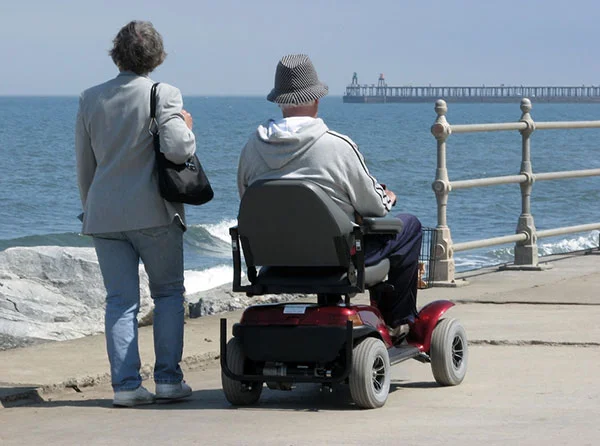
How Much Will Medicaid Pay for a Mobility Scooter
Determining the exact amount that Medicaid will pay for a mobility scooter can be challenging, as it depends on various factors. These factors include the type and quality of the scooter, the individual’s specific medical needs, and the regulations of the state’s Medicaid program.
While it’s difficult to provide an exact figure, Medicaid typically covers a significant portion of the cost. To get an accurate estimate, individuals should consult with their healthcare provider and a Medicaid-approved Durable Medical Equipment (DME) supplier to determine the coverage options and reimbursement rates.
Available Medicaid Mobility Scooters
Medicaid offers a range of affordable mobility scooters for individuals who meet the eligibility requirements. One popular option is the Victory® 10.2 Mobility Scooter, which provides users with both independence and mobility. With its one-hand touch disassembly feature, transporting the scooter becomes a breeze.
The non-scuffing tires protect your floors while the frosted LED headlights provide enhanced safety. Additionally, this Medicaid mobility scooter offers convenient features such as a USB charging port for your cell phone and an integrated storage space with a cupholder in the tiller.
Medicaid ensures that individuals with mobility limitations have access to the necessary equipment to improve their quality of life.
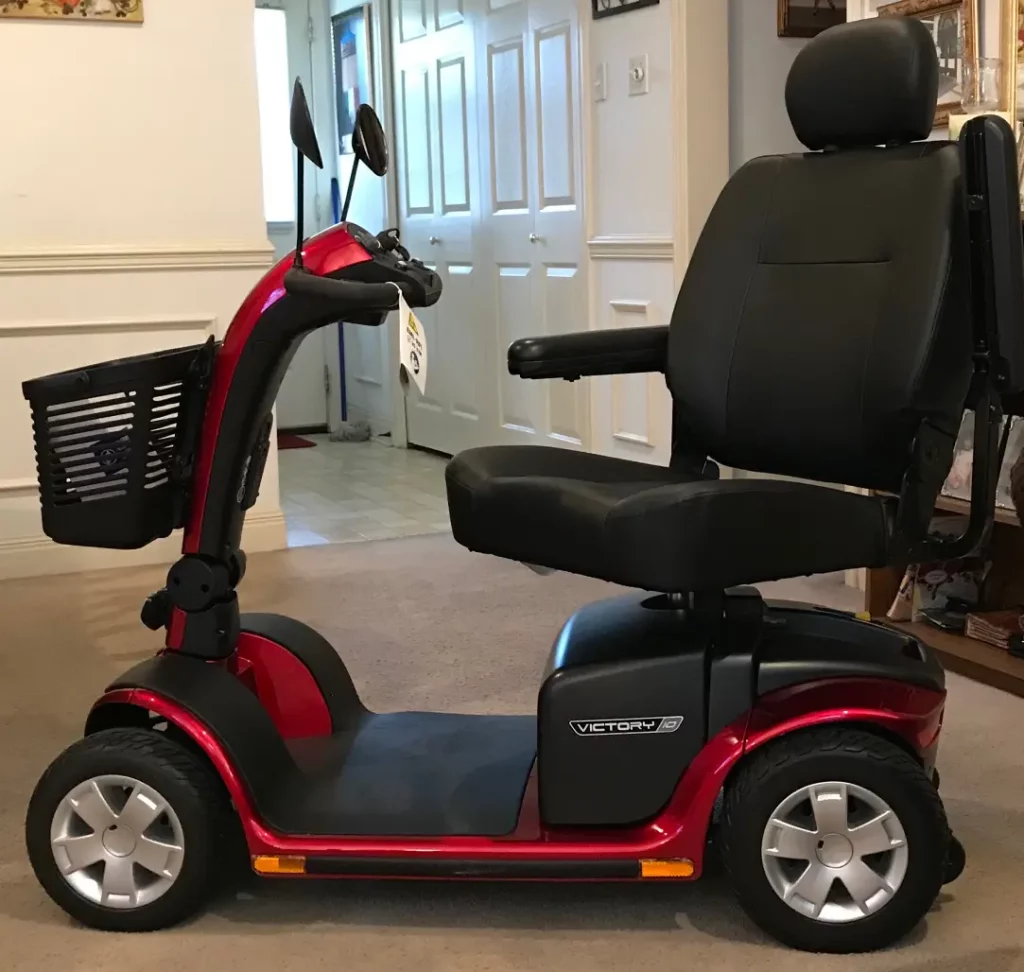
Repairs to Medicaid Mobility Scooters
Under your specific Medicaid program and place of residence, Medicaid may cover the costs of repairs to your mobility scooter if it is deemed medically necessary. To be eligible for coverage, your healthcare provider will need to write a new prescription explaining the medical need for repairs.
The coverage costs and any potential co-pays will vary depending on your individual circumstances and the Medicaid program you are enrolled in. While many individuals receive full coverage for their Medicaid mobility scooters, including replacement batteries, some may be required to pay out of pocket for repairs or replacement batteries.
It is important to check with your Medicaid program for specific coverage details and requirements.
Factors Influencing Medicaid Mobility Scooter Coverage
Medicaid is a government program that provides healthcare coverage for low-income individuals and families. While Medicaid does generally cover the cost of mobility scooters, there are several factors that can influence coverage and determine if a mobility scooter is considered medically necessary. Here are some key factors to consider:
1. Medical Necessity
Like any medical equipment covered by Medicaid, a mobility scooter must be deemed medically necessary by a healthcare provider. This means that the individual must have a mobility limitation that significantly impacts their ability to perform daily activities. A healthcare provider will assess the individual’s mobility needs and determine if a mobility scooter is the appropriate solution.
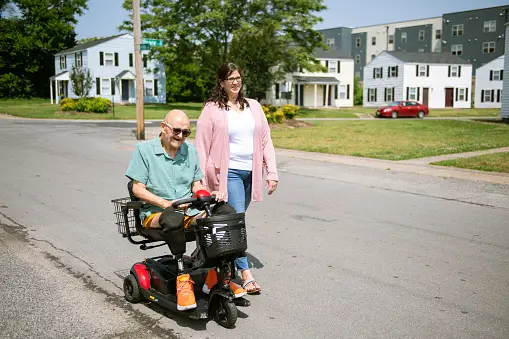
2. State Regulations
Medicaid is a state-administered program, and each state has its own rules and regulations regarding wheelchair coverage. Some states may have more generous coverage policies or higher reimbursement rates for mobility scooters, while others may have stricter guidelines. It is important to check with your state’s Medicaid program to understand the specific requirements and coverage options.
3. Documentation and Eligibility
To obtain coverage for a mobility scooter, extensive documentation is often required. This may include a prescription from a healthcare provider, medical records detailing the individual’s mobility limitations, and proof of medical necessity. Additionally, the individual must meet the eligibility requirements for Medicaid and demonstrate financial need.
4. Prior Authorization and Fee Schedule
Medicaid may require prior authorization for the purchase of a mobility scooter. This means that the healthcare provider must submit a request for approval before the purchase can be made. Additionally, Medicaid has fee schedules that outline the maximum allowable reimbursement rates for different types of mobility scooters. It is important to be aware of these fee schedules to understand the potential out-of-pocket costs.
FAQs
The cost of a mobility scooter can vary depending on the type and features. Medicaid typically covers a portion or the entire cost of a mobility scooter if it is deemed medically necessary. It is important to check with your state’s Medicaid program to determine the coverage and potential out-of-pocket costs.
Medicaid generally covers both manual and power mobility scooters. Manual wheelchairs are propelled by the individual using their own strength, while power mobility scooters are battery-operated for individuals who have limited mobility. The specific type of mobility scooter covered will depend on the individual’s mobility needs and the state’s Medicaid policies.
Yes, Medicaid generally covers the cost of wheelchairs if they are deemed medically necessary. Similar to mobility scooters, Medicaid requires documentation and prior authorization in most cases. By meeting the eligibility criteria and following the specific guidelines of your state’s Medicaid program, you can potentially receive coverage for a wheelchair.
Conclusion
In conclusion, Medicaid may cover the cost of a mobility scooter if it is deemed medically necessary and meets the eligibility requirements. Both manual and power mobility scooters can be covered, depending on the individual’s mobility limitations and the state’s Medicaid policies.
To navigate Medicaid’s coverage for a mobility scooter, it is important to consult with a healthcare provider, gather all necessary documentation, and familiarize yourself with Medicaid’s fee schedule. It is also recommended to check your state’s Medicaid program for specific requirements and coverage options.
